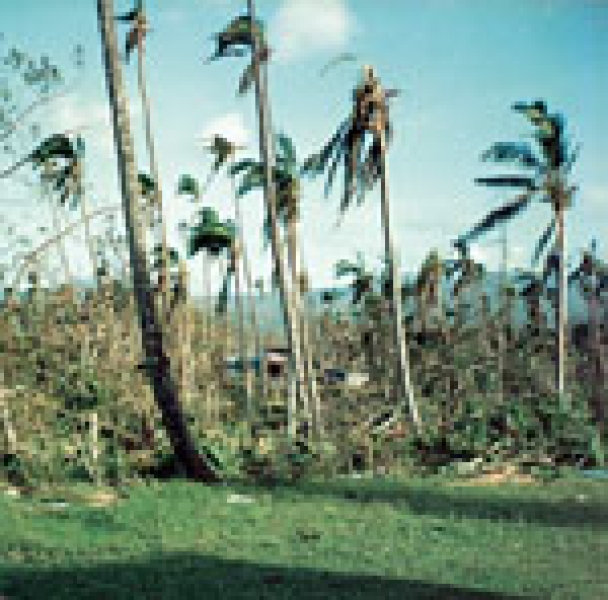A unique pilot project to help Samoa’s largest village better cope with natural disaster is the focus of an upcoming exhibition at the Museum of Samoa timed to coincide with a major United Nations conference in Apia.
The Third International Conference on Small Island Developing States opens on 1 September and is expected to attract about 3000 international delegates including heads of governments and ministers from around the world.
The pilot project was initiated by NIWA marine geologist Geoffroy Lamarche and Cécile Bonnifait of Wellington's Atelier Workshop Architects. It aims to help the Samoan community build its resilience to natural disasters and proposes some new building solutions that take into account Samoan culture and local materials.
It focuses on the village of Sa’anapu on the south coast of Samoa’s main island, Upolu and combines expertise in science, anthropology and architecture. The village was badly affected by the 2009 tsunami, during which near 150 people lost their lives, and Cyclone Evans in late 2012.
Much of the village is built on a sand berm bounded by mangroves and a fringing reef. Both mangroves and the reef have highly prized ecological, economic and cultural values for the village. Rising sea levels are causing erosion and retreat of the sand berm, meaning the village has been progressively moving but not in a controlled or planned manner. Early engagement with the council of Matais (chiefs) of Sa'anapu has enabled everyone to work towards developing a stronger future for the village.
The exhibition will showcase some of the work already completed and includes physical models of new village facilities that it is hoped will be built at Sa’anapu. NIWA has been involved in assessing the potential impact of a tsunami on the village, by generating a numerical model of a tsunami originating from the Tonga Trench, and in estimating frequency of natural disasters.
Other components of the project include planning for a community centre that transforms into an emergency shelter during natural disasters, relocation of a pre-school outside the high hazard area, and training Samoan experts to continue collecting survivor stories.
Dr Lamarche says the relationships between the natural environment and the architectural and social environments are rarely accounted for in projects involving coastal island communities.
“We are merging research, creativity, construction and knowledge transfer in a very exciting way. But what makes this pilot project really special is its focus on finding modern solutions that retain and preserve the cultural heritage, history and traditions of the village.”
Ms Bonnifait says they want to create a new focal point for the village by creating a community building that is a contemporary adaption of traditional Samoan architecture. Those involved have been working alongside local Matai to learn more about the village history, and with craftsmen, guardians of the traditional building techniques.
“The engagement the people of Sa’anapu is crucial to the success of this conceptual project. We were fortunate that the council of Matai of the village was willing to collaborate with us. One of the orators - Popese Leaana (Tupu) - has a unique skill set that combines excellent technical expertise of local and traditional construction and a direct knowledge of the effects of climate change and natural hazards on the village. ”
Funding for the early stages of the project has been a joint effort between NIWA and the Pacific Fund of the French Ministry of Foreign Affairs.
The exhibition opens at the Museum of Samoa on 28 August and runs until 24 October. The official opening will be on September 1 and will be attended by Samoa, New Zealand, France and New Caledonia dignitaries as well as many Sa’anapu residents. Dr Lamarche says the next stage of the project is to secure more funding so that this conceptual project can progress to a feasibility stage.

